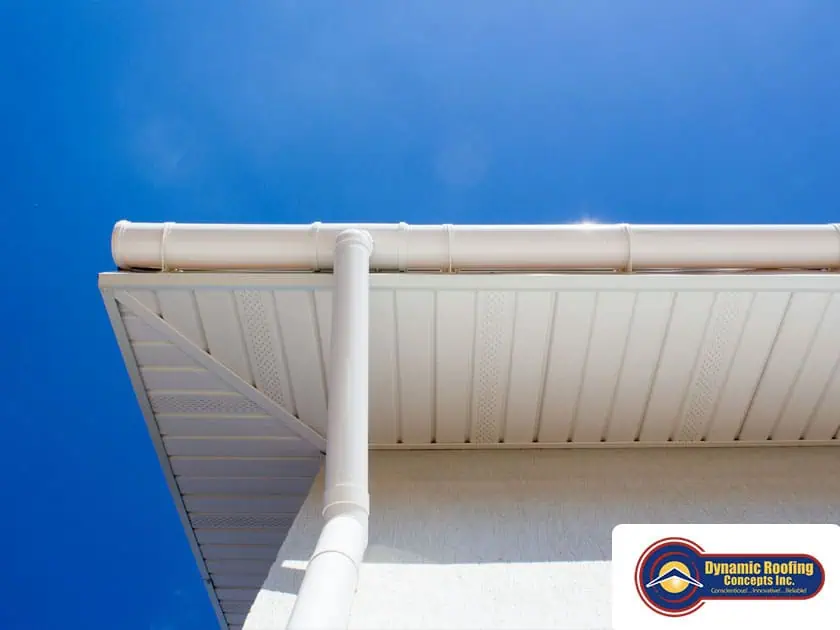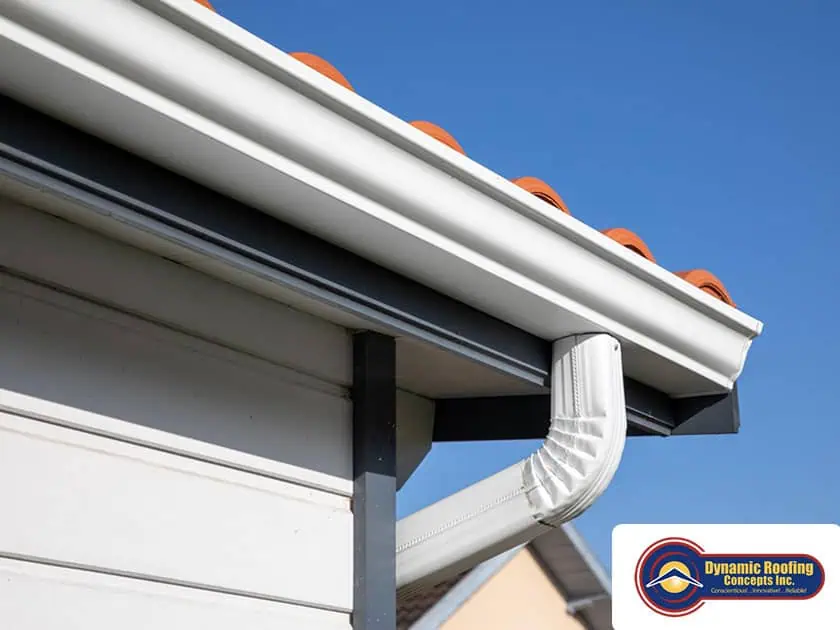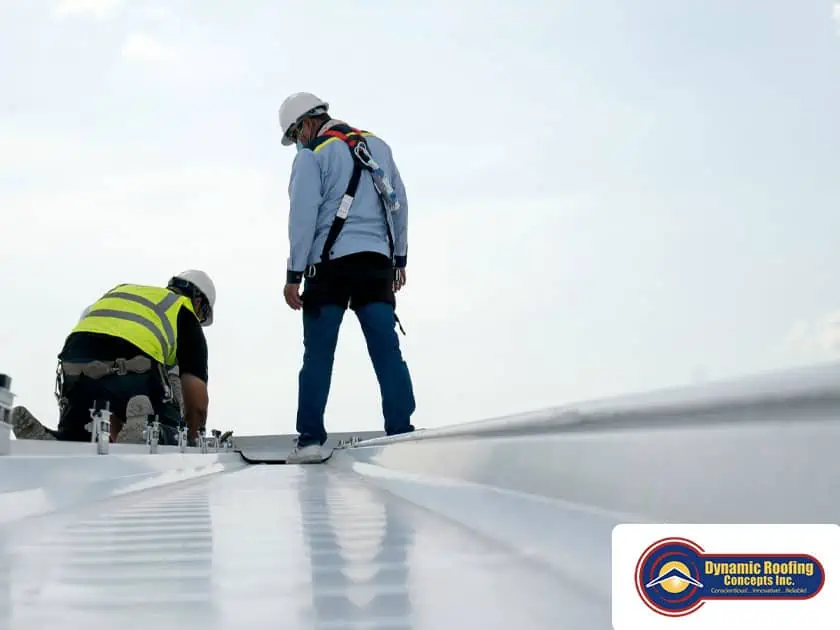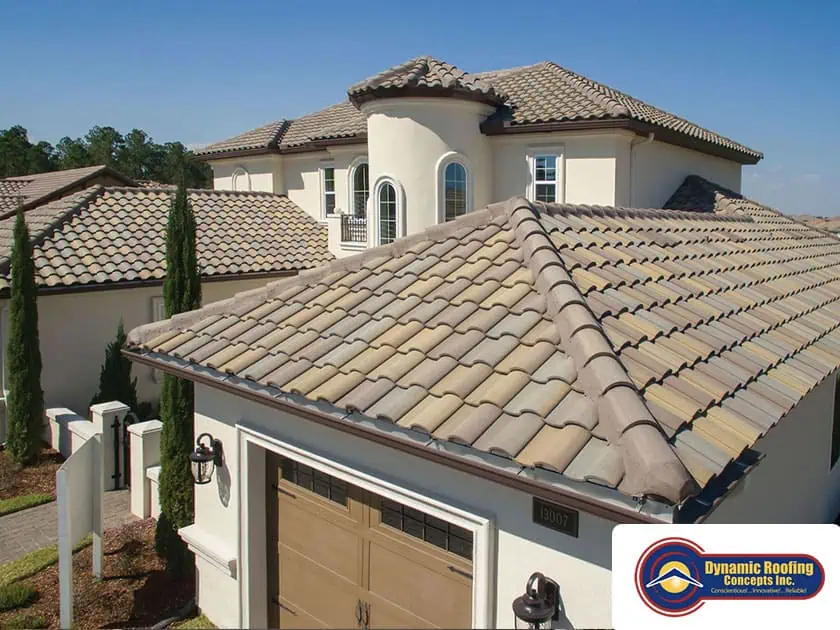

Share On:
A properly functioning roof drainage system is crucial for maintaining the structural integrity of any building, particularly in regions prone to heavy rainfall and severe weather. These systems are vital for directing and removing water from the roof, preventing water damage, and mitigating potential hazards.
This guide covers the essentials of roof drainage systems, offering insight for homeowners, property managers, and business owners.
Components of a Roof Drainage System
To prevent water damage, a roof drainage system is designed to manage and redirect water away from a building's roof. Key components include gutters, which collect rainwater from the roof, and downspouts, which channel the water safely to the ground.
Additionally, drainpipes are essential as they transport the water away from the building's foundation, ensuring structural safety.
| Component | Description |
| Gutters | Channels installed along the roof's edges to collect and direct rainwater away from the building. |
| Downspouts | Vertical pipes attached to gutters carry rainwater from the roof to the ground, directing it away from the foundation. |
| Scuppers | Openings in the perimeter walls or parapets of flat roofs that allow water to drain off the roof. |
| Roof Drains | Installed on flat or low-slope roofs, these drains collect water and direct it into a drainage system, typically through internal pipes. |
| Roof Drain Leaders | Pipes connecting the roof drains to the main drainage system, directing the water to ground level or an underground drainage system. |
| Crickets | A ridge structure is installed on the roof to divert water around obstructions such as chimneys or skylights. |
| Splash Blocks | Placed at the base of downspouts to prevent soil erosion by dispersing the water flow over a larger area. |
| Gutter Guards | Protective covers for gutters that prevent debris from clogging the system, ensuring smooth water flow. |
| Catch Basins | Underground structures collect rainwater from downspouts and direct it to storm drains or other drainage systems. |
| Overflow Drains | Secondary drains installed to prevent water accumulation on the roof if the primary drainage system is overwhelmed or clogged. |
| Drainage Pipes | Pipes carrying water from the roof to the ground or an external drainage system prevent water buildup and potential roof damage. |
| Slope and Pitch Adjustments | Modifications to the roof design to ensure proper water flow towards the drainage system, preventing water pooling and potential damage. |
Gutters and Downspouts
Gutters are troughs installed along roof edges designed to collect water and channel it to downspouts. These components are often made from durable materials like stainless steel or PVC. They can be sized to accommodate the volume of water typical for the roof's geographic and climatic conditions. Downspouts ensure the efficient water flow from gutters to the ground or into a municipal stormwater system.
Scuppers and Roof Drains
For flat or low-slope commercial roofs, scuppers are an effective drainage solution, channeling water directly off the roof edges. Alternatively, roof drains, typically seen in large commercial or industrial buildings with extensive roof footprints, are installed at strategic points on the roof surface to prevent water accumulation and ponding.
Roof Drain Leaders and Crickets
Roof drain leaders enhance the effectiveness of roof drains by guiding water toward designated drainage areas, reducing the risk of leaks and structural damage. Roof crickets, usually installed behind high barriers like chimneys, redirect water to gutters or drains, preventing water-related issues and debris accumulation.
Planning and Installation
Selecting the right roof drains and other drainage components is critical during the building's design phase. Proper drainage planning involves understanding the roof slope, the potential for debris buildup, and the structural framing configuration, which can all influence drainage efficiency. Installation should follow the applicable building codes and often requires consultation with a roofing professional to ensure compatibility with the existing roof structure and membrane.
Maintenance and Troubleshooting
Regular inspections and routine cleaning are essential for maintaining the efficiency of a roof drainage system. Clogged gutters, blocked scuppers, or backed-up roof drains can lead to water infiltration, excess water buildup, and eventually, costly damage to the roof and the underlying structure.
Whether you have asphalt shingles, a flat roof, or a tile roof, property owners should establish a maintenance schedule that includes frequent cleaning of gutters and inspecting downspouts to ensure proper flow and prevent water from pooling or freezing in colder climates.
Innovative Solutions and Upgrades
Roof drainage solutions have undergone a significant transformation driven by innovative advancements. By incorporating smart sensors into drainage infrastructure, building owners and managers can access real-time data on water levels and flow rates. This enables more proactive and informed decision-making for efficient water removal.
Advanced membranes in roofing materials have also revolutionized water diversion away from buildings. These membranes are designed for durability and efficiency, channeling water toward drainage systems and reducing the risk of water accumulation and potential structural damage.
Back-up drainage options are a wise upgrade for buildings exposed to extreme weather. Secondary drainage pathways or emergency systems can handle excess water during heavy rainfall or storms, ensuring properties remain protected even in severe weather.
Upgrading to larger, more efficient gutter systems can also enhance drainage efficiency. These systems quickly direct water from the building, minimizing pooling or overflow risks during heavy rain. Modern gutter systems feature self-cleaning mechanisms and debris filters, further improving performance and reducing maintenance needs.
Building owners can use these advanced drainage solutions to ensure their properties remain safe and resilient against water damage, regardless of weather conditions.
Get a Professional Evaluation of Your Roof Drainage System
Understanding and maintaining your roof drainage system is vital for the longevity and safety of your property. Proper drainage prevents water damage, structural issues, and other costly problems. Here's why regular maintenance and professional evaluations are crucial:
The Importance of Regular Maintenance
Regular maintenance helps identify potential issues before they become major problems. This includes cleaning gutters, checking for clogs, and ensuring downspouts and drains are functioning correctly.
Timely Upgrades
Upgrading your drainage system can enhance efficiency and capacity, especially if your roof experiences increased rainfall or other environmental changes. Innovations in roofing materials and designs can provide better protection and longevity.
Adherence to Building Codes
Compliance with local building codes ensures that your drainage system meets safety standards and performs effectively. Non-compliance can lead to fines and compromised structural integrity.
Consulting with Professionals
Experienced roofing professionals can provide expert assessments and recommendations tailored to your specific needs. They can identify issues that might not be visible during a routine check and suggest the best solutions.
Contact Dynamic Roofing Concepts Today
Don't wait for a problem to arise. Protect your investment by scheduling a free on-site evaluation with Dynamic Roofing Concepts. Our team of experienced professionals will assess your roof and drainage system and ensure it's in optimal performance.



